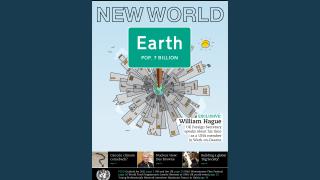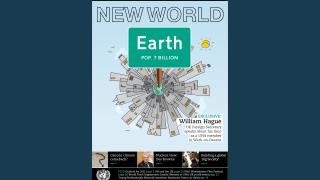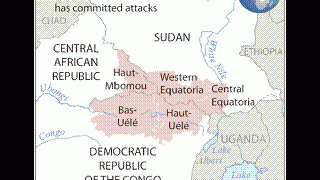
The UN estimates that the global population will breach the seven-billion mark this year, peaking at nine billion in 2045.
Most of the growth will take place in developing nations, many of them among the world’s least-developed countries, and will be concentrated among the poorest populations in urban areas.
Given the deep challenges facing the world – climate change and the food, fuel and financial crises – it is not surprising that this landmark has generated some alarm. The population debate is seldom free from hyperbole, from Thomas Malthus’s gloomy predictions in 1798 to Paul Ehrlich’s 1968 book ‘The Population Bomb’. The modern spectres of resource depletion and slums, coupled with perennial immigration fears, have only added to this sense of a world ‘bursting at the seams’.
Population – a smokescreen?
Over half of humanity now lives in cities. The developing world’s urban population is growing by an average of five million people every month. Nearly a billion people go hungry each night. 13 per cent of the world’s population is without safe drinking water. About half the people in developing regions have no access to adequate sanitation. The world as a teeming slum – the scenario does not seem improbable.
It can be tempting to make the leap from overcrowding to poverty, global warming or conflict. The idea that the world’s resources would be under less strain if there were fewer people seems almost intuitive. In an article discussing the ‘population explosion’ in UNA-UK’s magazine in 1959 – when the global population was less than half of what it is today – Sir Herbert Broadley, the UN Children’s Fund UK representative, pointed out that it is not so straightforward. Quoting Dr Homi Bhabha of the Tata Institute, he wrote: “the population of the US increases at a rate higher than...in India, but nevertheless the standard of living continues to go up because their productivity rises faster”.
Population issues are often poorly understood. Earlier this year, a report by the Institute of Mechanical Engineers, provocatively entitled ‘One planet, too many people?’, prompted media outlets to conclude that population growth ‘is a threat’ and ‘is not a threat’. Which is correct?
Do do we need a global one-child policy?
The Optimum Population Trust, a UK-based think tank, believes that governments should actively encourage people to have fewer children. China and India embarked on national population reduction strategies in the 1970s. In China, where rates were declining before the introduction of the one-child policy, women now average 1.5 children, down from six in 1965. In India, some states have continued to employ the controversial sterilisation programmes implemented by Indhira Gandhi. Andhra Pradesh, for example, offers poor citizens priority housing benefits for undergoing treatment. But Indian birth rates have seen the biggest dip in Kerala, which cites high levels of education among women as the cause.
Globally, the population growth rate has actually been dropping for some time. Fertility is now at 1.4 births per woman, well below the global replacement level (2.3 – the rate needed to maintain a stable population), in 45 rich countries and 28 developing nations, including China. Sub-Saharan Africa is a notable exception, with the average woman giving birth to five children.
The pace of decline has been staggering. Between 1950 and 2000, the average fertility rate in developing countries tumbled from six to three. What took 130 years in the UK, happened
in just 20 in South Korea. Countries all over the developing world have slashed their birth rates. Since the 1980s, Iran’s and Brazil’s have declined by roughly 70 and 50 per cent respectively. Improved living standards, education and family planning have helped this trend. But Hania Zlotnik, Director of the UN Population Division, says: “we still don’t understand why fertility has gone down so fast in so many societies, so many cultures and religions. It’s just mind-boggling”.
This decline, however, will take some time to have effect. We now have the largest generation of adolescents entering childbearing age, including some 1.8 billion young women. Even if theyhave just two children on average, the global family is set to grow for the next couple of decades as a result of this knock-on effect.
Disaster averted?
Rapid improvements in health care, food production and living standards have seen the world evade the partial extinction predicted by Malthus and Ehrlich. Despite deadly diseases like HIV/AIDS, global pandemics, obesity and pollution, many people are living longer and healthier lives. The result? An ageing population in several regions. In Japan for example, the elderly make up 23 per cent of the population and far outnumber the young.
Many rich countries are concerned that increased life expectancy and lower birth rates will create ‘pension crises’ as they will lack the workforce to support their elderly citizens. Lowering the birth rate could arguably also damage poorer countries. Take Niger: with a child mortality rate of one in five, the birth rate of seven per woman could be seen as an insurance policy. The notable exception to this trend is the US. It has a rising birth rate and young workforce due to immigration.
Not how many but where
The 2009 UN Human Development Report focussed on migration, arguing that if properly regulated, it can bring huge benefits to both host and origin countries. Sensible laws and policies that enable migrants to go where they are needed are crucial. Rural-to-urban migration and the development of cities will require particular attention.
In 1800, only three per cent of the global population lived in cities. By 2050, the UN Population Fund estimates that 70 per cent of us will live in so-called ‘mega-cities’ – those with over 10 million inhabitants. 21 such cities exist today, most in developing countries, and water, sewage and housing provision is severely stretched.
Dr Tim Jones of Future Agenda says we must build cities to reflect the realities of urban growth. “Sprawl is already being rejected as a deeply inefficient model for growing cities. Hong Kong and Paris are good examples where densities are key to success…just five per cent of Hong Kong’s personal income is spent on transportation where- as in Houston it is 20 per cent because everyone drives such huge distances.”
Can we feed the billion(s)?
The UN World Food Programme believes that it is possible to feed the current 925 million people who suffer from undernourishment. The problem is one of income, distribution and access. Likewise, the UN Food and Agriculture Organization has concluded that it is possible to produce enough food to feed the growing population, through a combination of smart agricultural planning, investment in seeds and technology, and knowledge-sharing. High-yield seeds and ample fertiliser allow China, for example, to feed its billion-plus people on less than 10 per cent of the earth’s arable land.
“In the wildness of speculation it has been suggested that Europe ought to grow its corn in America and de- vote itself solely to manufacture and commerce,” Malthus wrote dismissively at the end of the 18th Century. In fact, this is largely what has happened. More emphasis should be placed on policy-driven global agricultural planning rather than market-driven production.
It’s how we consume
Ehrlich stands by many of the predictions he made in the 1960s. But he too has changed his tune. Speaking to the Guardian in January, he said “you cannot view consumption and population growth as separate issues. In one sense, it is the consumption that damages our life support system as opposed to the actual number of people expanding.”
In terms of lowering carbon emissions, a focus on population growth in the countries with high birth rates would have little impact. It is the rich countries with their small families who use the most energy. Five per cent of the world’s population uses nearly a quarter of global energy. One American consumes as much as roughly 250 Ethiopians.
The World Bank predicts that over a billion people in the developing world will belong to the middle classes in 2030, up from just 400 million in 2005. Instead of worrying about their numbers, the focus should be on whether they will consume as much meat as their counterparts in Europe or drive large American-style cars, and what alternatives could be developed.
Changing our habits not breeding patterns
Population growth no doubt puts pressure on poorer countries but it is a factor that exacerbates existing conditions rather than creating them. Curbing population will not by itself lead to the world’s resources being shared more equitably or stewarded more prudently. Our efforts should be directed instead at urban development; improving water supply, sanitation and food security, raising living standards; managing migration and moving towards a low-carbon world.
Ehrlich, perhaps surprisingly, gives us reason for optimism. He points out that “we utterly transformed our consumption habits and patterns of economy in the US between 1941 and 1945, and then back again. If you’ve got the right incentives, you can change patterns of consumption very rapidly.”
Natalie Samarasinghe is the editor of New World and Head of Policy & Communications at the UN Association of the UK













